National symbols of Romania
This article does not cite any sources. (August 2019) |
| This article is part of a series on |
| Symbols of Romania |
|---|
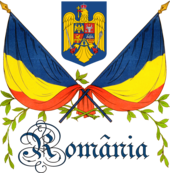 |
|
| Part of a series on the |
| Culture of Romania |
|---|
 |
| History |
| People |
| Languages |
| Sport |
|
There are several national symbols of Romania, representing Romania or its people in either official or unofficial capacities.
| Type | Image | Symbol |
|---|---|---|
| National flag | 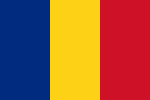
|
The Flag of Romania (Romanian: Drapelul României) is a tricolour with vertical stripes: beginning from the flagpole, blue, yellow and red, these colours found on late 16th century royal grants of Michael the Brave, as well as shields and banners representing Romanians everywhere. During the Wallachian uprising of 1821 these colours composed the revolutionaries’ flag and for the first time a recorded meaning was attributed to them: "Liberty (sky-blue), Justice (field yellow), Fraternity (blood red)". The colours also symbolise the Principalities that formed Romania: Vallachia - yellow (having a yellow and blue flag before the 1859 unification), Moldavia - red (having a red and yellow flag prior to the 1859 unification) and Transylvania -blue (having a blue-red-yellow flag prior to the 1918 Union) |
| National coat of arms | 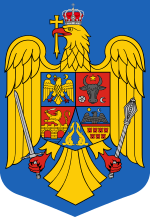
|
The Coat of arms of Romania The golden aquila holding an Orthodox cross is the symbol of Latinity and a heraldic bird of the first order symboling courage. The shield on which it is placed is azure, symbolising the sky. The eagle holds in its talons the insignia of sovereignty: a mace and a sword, the latter reminding of Moldavia's ruler, Stephen the Great whereas the mace reminds of Michael the Brave, the first unifier of the Romanian Principalities. On the bird's chest there is a quartered escutcheon with the symbols of the historical Romanian provinces (Wallachia, Moldavia, Transylvania, Banat and Oltenia but also Dobruja). |
| National anthem | Awaken thee, Romanian! |
Deșteaptă-te, române! It was written and published during the 1848 revolution and was first sung in late June in the same year in the city of Brașov, being immediately accepted as the revolutionary anthem. Since then, this song, which contains a message of liberty and patriotism, has been sung during all major Romanian conflicts, including during the 1989 anti-Ceauşist revolution. In 1990 it became the national anthem, replacing the communist-era national anthem "Trei culori" ("Three colours"). The Moldavian Democratic Republic, during its brief existence, between 1917 and 1918 as well as the Republic of Moldova between 1991 and 1994 had the same anthem. July 29 is the "National Anthem Day" (Ziua Imnului național), an annual observance in Romania. |
| Great Union Day | 
|
Great Union Day It commemorates the assembly of the delegates of the people of Transilvania held in Alba Iulia, which declared the union of Transylvania with Romania and completed the Great Union. This holiday was set after the 1989 Romanian Revolution and it marks the unification of Transylvania, but also of the provinces of Bessarabia and Bukovina with the Romanian Kingdom, in 1918. Before 1918, the national holiday of Romania was set to be on May 10, which had a double meaning: it was the day on which Carol I of Romania set foot on the Romanian soil (in 1866), and it was the day on which the prince ratified the Declaration of Independence from the Ottoman Empire in 1877. In Communist Romania, the date of the national holiday was set to August 23 to mark the 1944 overthrow of the pro-fascist government of Marshal Ion Antonescu. |
| Independence Day | 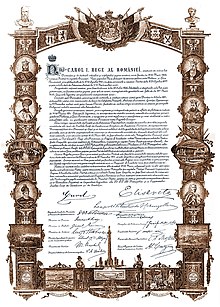 |
It commemorates the day of May 9/21, 1877, Mihail Kogălniceanu, through a memorable speech, proclaimed Romania's independence in the cheers of the Assembly. In the same afternoon, the Senate voted on the motion, and after that, a procession with chariots and torches was formed throughout Bucharest. The next day, May 10/22, it was 11 years since Prince Carol had arrived in Bucharest to receive the throne of the Principalities and a great festivity was already announced. The first to speak was the vice-president of the Chamber, Dimitrie Brătianu: "Your Majesty, the Chamber and the Senate have recognized Romania's independence" against Turkey. Your Majesty, in the heroic heads of our armies, will make the enemy impose itself and be recognized by the guarantor powers as a salutary necessity in Europe. "
Thus, 10 May became the National Day of Romania during the regal period. |
| Official language |  |
Romanian The main Eastern Romance language, spoken by around 24 to 28 million people |
| Military flag |  |
The Battle Colors of Romania The military colours are the symbol of military honour, bravery and glory. They evoke the past struggle of the Romanian people for national liberation and the traditions of unity, reminding each soldier of his sacred duty to serve the Fatherland with trust, and to defend at all costs the unity, sovereignty and independence of Romania |
| Type | Image | Symbol |
|---|---|---|
| National Crown | 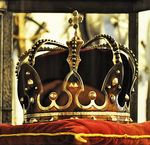
|
The Steel Crown of Romania The crown was forged from the steel of a gun captured by the Romanian Army from the Ottomans during the War of Independence (1877–1878). King Carol I of Romania chose steel, and not gold, to symbolize the bravery of the Romanian soldiers and was crowned with it during the ceremonies of the proclamation of Romania as a kingdom in 1881 in Bucharest. The Crown was again used in 1922 at the coronation of King Ferdinand I of Romania and Queen Maria of Romania as sovereigns at Alba-Iulia. The third time the Crown was used during the coronation and anointment of King Michael I of Romania by the Orthodox Patriarch of Romania, Nicodim Munteanu, in the Patriarchal Cathedral of Bucharest, on the very day of his second accession, September 6, 1940. The Steel Crown is kept in the National Museum of Romanian History |
| National patron saint | 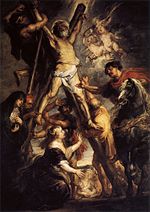
|
Saint Andrew According to the Romanian Orthodox Church, Andrew preached the Gospel to the Daco-Romans in the province of Dobruja (Scythia Minor), whom he converted to Christianity. There are some archaeological pieces of evidence for this tradition found in a cave called Basarabi, near Constanţa harbour, containing carved symbols of ancient Christianity. The Romanians have never recordedly converted to Christianity as the neighbouring nations, instead adopting the Orthodox Faith by themselves during the ethnogenesis process in an unorganized fashion. Having Apostle Andrew as a patron saint marks a special connection with the Ecumenical Patriarchate of Constantinopole and the political and religious heritage of Byzantium in the Romanian Principalities, metaphorically called Byzantium after Byzantium |
| National personification | 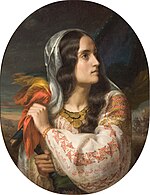
|
Romania |
| National motto | 
|
"Nihil Sine Deo" (Latin, "Nothing without God") used under the Hohenzollern-Sigmaringen dynasty |
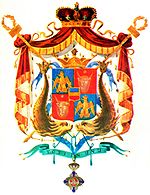
|
"Toți în unu" (Romanian, "All in one") used during the second half of the reign of Alexandru Ioan Cuza | |

|
"Dreptate, Frăție" (Romanian, "Justice, Brotherhood") used in Wallachia after the Wallachian Revolution of 1848 | |

|
"In Fide Salus" (Latin, "In Faith is the Salvation") used as the motto of the Order of the Star of Romania since 10 May 1877 | |
| National Founders | 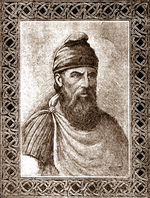
|
Decebal
|
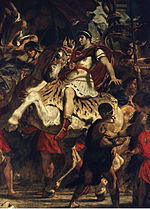
|
Trajan
| |

|
Mihai Viteazul
| |
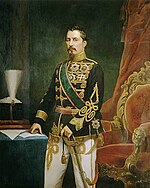
|
Alexandru Ioan Cuza
| |
 |
Carol I of Romania
| |

|
Ferdinand I of Romania
| |
| Floral emblem | 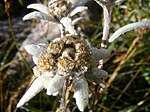
|
Edelweiss |
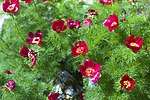
|
Romanian Peony | |

|
Dog rose | |
| National animal | 
|
Lynx |
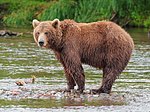 |
Brown bear | |

|
Aurochs (especially in Moldavia) | |
| National mythical animal | 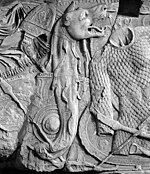 |
Dacian Draco |
| National bird | 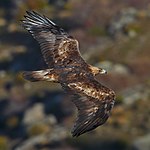
|
Golden eagle (the mountain aquila) |

|
Great white pelican | |
| National tree | 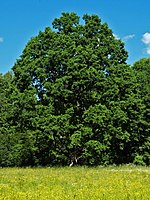
|
Oak |
| National poet | 
|
Mihai Eminescu |
| National epic | 
|
Miorița |
| National wear |  |
Romanian tratditional clothing |
| National hat |  |
Clop |
 |
||
| National motif | 
|
The Endless Column depicting an important motif in the traditional art. The pattern stands for infinity and persistence. |
| National art | 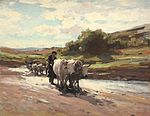
|
(by Nicolae Grigorescu) |
| National Guard Brigade | 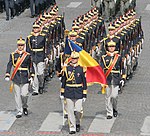
|
Brigada 30 Gardă "Mihai Viteazul" |
| National mountain |  |
Moldoveanu Peak, 2544 m - highest mountain peak of Romania |

|
Bucegi, believed to be the Dacian holy mountain Kogainon, on which the mythical figure Zalmoxis resided in a cave, and also the location of the enigmatic natural formations called The Great Sphinx and Babele | |
| National sport | 
|
Oină |
| National dance | 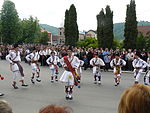
|
Căluș |
 |
Hora Unirii | |
| National instrument | 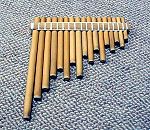
|
Pan flute |

|
Tulnic | |
| National beverages | 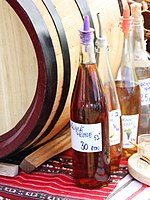 |
Pălincă |
 |
Wine | |
 |
Țuică | |
| National dish | 
|
Sarmale |

|
Mămăliga cu brânză și smântână | |
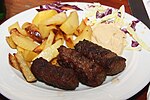
|
Mititei | |

|
Borș | |
 |
Ciorbă de fasole cu ciolan afumat | |
| National sweet |  |
Papanași |
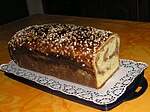
|
Cozonac |
- National symbols of Romania